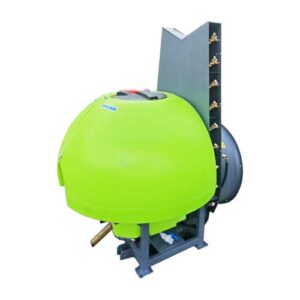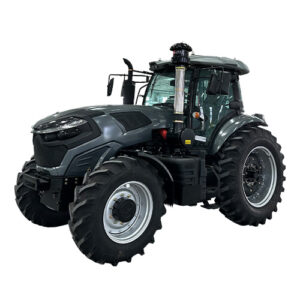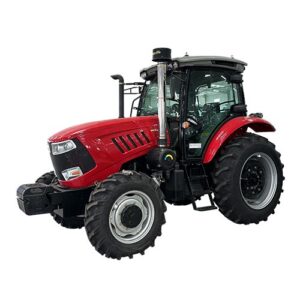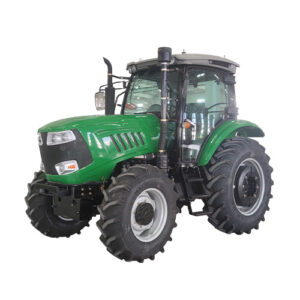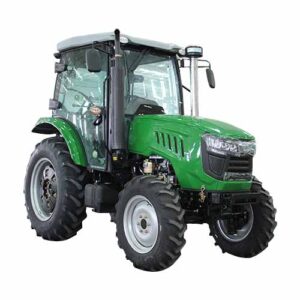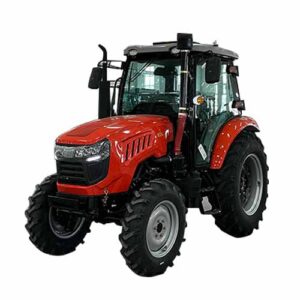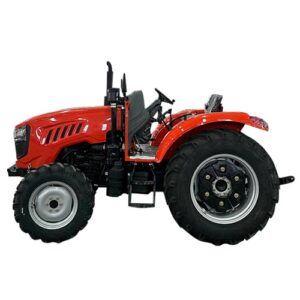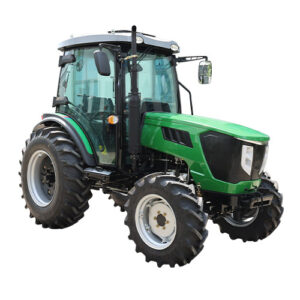Introduction
Tractor rototillers are invaluable tools for farmers and gardeners looking to prepare their land for planting. These powerful attachments, when used correctly, can save time and effort while ensuring optimal soil conditions for crops. In this guide, we will explore the essential tips and techniques for using a tractor rototiller to achieve efficient land preparation.
Understanding Tractor Rototillers

What is a Tractor Rototiller?
A tractor rototiller is a farming implement attached to the back of a tractor that is used to break up and aerate soil. It consists of rotating blades or tines that dig into the ground, breaking up compacted soil and creating a fine, granular seedbed.
Key Components of a Tractor Rototiller
- Tines: These are the blades or teeth that rotate and dig into the soil.
- Depth Adjustment: Allows you to control how deeply the tines penetrate the soil.
- Width Adjustment: Determines the width of the tilling path.
- Power Source: Can be powered by the tractor’s PTO (power take-off) or hydraulics.
- Hitch: Attaches the rototiller to the tractor.
Tips for Using a Tractor Rototiller
Choose the Right Attachment
Select a tractor rototiller attachment that matches the size and horsepower of your tractor. Ensure compatibility with your tractor’s hitch system and PTO or hydraulic capabilities.
Prepare the Land
Before using the rototiller, remove any large rocks, debris, or vegetation from the area to be tilled. This will prevent damage to the equipment and ensure a smoother tilling process.
Adjust Depth and Width
Set the depth and width of the rototiller according to your specific soil and planting needs. A deeper tilling depth may be necessary for breaking up compacted soil, while a wider width can cover more ground in less time.
Start Slowly
Engage the rototiller at a slow speed and gradually increase the throttle as you become more comfortable with the equipment. This will allow you to maintain control and avoid damage to the tractor or tiller.
Overlap Passes
Overlap each pass slightly to ensure thorough coverage and prevent any missed spots. This will help create a uniform seedbed and avoid the need for additional passes.
Popular Tractor Attachments Comparison

| Attachment | Description |
|---|---|
| Loader | Used for lifting and moving materials |
| Mower | Cuts grass and vegetation |
| Backhoe | Digs trenches and excavates soil |
| Box Blade | Levels, grades, and backfills |
| Disc Harrow | Breaks up soil and prepares seedbeds |
| Pallet Forks | Handles pallets and other materials |
Conclusion
Using a tractor rototiller for land preparation can significantly streamline the farming or gardening process, but it’s essential to follow proper techniques to achieve optimal results. By choosing the right attachment, preparing the land, and adjusting settings appropriately, you can ensure efficient and effective soil cultivation for successful planting.
FAQ
How deep should I till my soil with a tractor rototiller?
The ideal tilling depth depends on factors such as soil type, existing vegetation, and planting requirements. Generally, a depth of 6-8 inches is suitable for most crops, but deeper tilling may be necessary for compacted or hard soil.
Can I use a tractor rototiller on rocky soil?
Tractor rototillers are designed to break up and till soil, but they may struggle with extremely rocky or hard-packed soil. It’s best to remove large rocks and debris from the area before tilling to prevent damage to the equipment.
How fast should I drive my tractor when using a rototiller?
It’s essential to maintain a slow and steady speed when operating a tractor rototiller to maintain control and ensure thorough tilling. Start at a slow speed and gradually increase as needed, but avoid excessive speed, which can lead to loss of control and damage to the equipment.
Can I use a tractor rototiller for weed control?
Tractor rototillers are primarily used for soil preparation and cultivation, but they can help control weeds by disrupting their growth and root systems. However, they may not eliminate all weeds, especially perennial or deeply rooted varieties.
Do I need to add amendments to the soil before tilling?
Adding soil amendments such as compost, fertilizer, or lime before tilling can improve soil fertility and structure, leading to healthier plants. However, it’s not always necessary, especially if your soil is already fertile and well-balanced.


